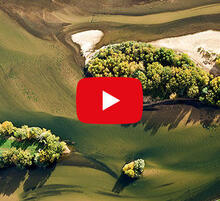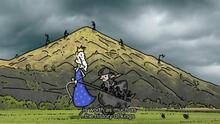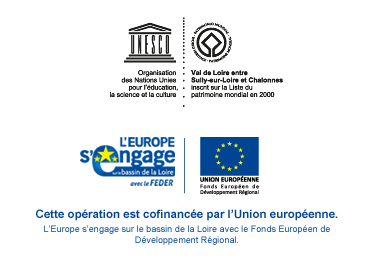- Home
- Know
- A la carte
- “Loire Valley words” glossary
“Loire Valley words” glossary
Published on 13 April 2017 - Updated 21 August 2017
Apse
Recess, usually semi-circular, forming the far end of the chancel in many churches.
Alluvium
Sedimentary deposit (mud, sand and gravel) left by a watercourse, accumulated during periods of flooding.
Hydraulic annexes
Wetlands in permanent or temporary relationship with the river, either directly or by capillary action: islands, oxbows, grasslands, forests, riparian forestland, springs and underground watercourses.
Fireclay
Terracotta with high heat resistance and reflectivity.
Biodiversity
Variety and diversity of living animal and vegetable species and their genetic characteristics.
Backwaters
Stagnant wetlands alongside river channels. They reconnect to rivers when flooding occurs.
Natural levee
Accumulation of alluvial deposits alongside a watercourse, forming a slightly raised area over the course of time.
Oxbow
Arm of a river where water once flowed but which is now dry.
Main arm
Part of the riverbed through which most of the water flows.
Barge
Large flat-bottomed boat with high load capacity, used for river transport of goods.
Chancel
Easternmost part of a church, completing its layout along with the nave and transept crossing.
Lateral depression
Part of a watercourse's floodplain located parallel to the river beyond the natural levee.
Spillway
Part of the Valley that receives overflows in the event of a major flood fed by a lower section of a levee.
Tithe
Tax in kind, variable in amount but generally one tenth of a peasant farmer's harvest, donated to the church.
Duit
Longitudinal dyke built across a river channel to guide flow and current to a specific bank.
Ice jam
Accumulation of blocks of ice carried by a river and obstructing passage along it.
Epi
Small dyke built perpendicularly to the bank to channel a river's flow.
Epitaph
Commemorative inscription engraved on a tombstone or funerary monument.
Low-water level
The lowest level of water and flow, normally experienced in summertime.
Pediment
Triangular or arched architectural feature on a horizontal base topping a façade or avant-corps, wider than it is high and often bearing sculpted decoration.
Levee
Name given to the long dykes bordering the Loire to protect its Valley from the rivers' floods.
Ligerian
Adjective derived from "Liger", the Latin name for the Loire, and qualifying anything related to it (e.g. Ligerian boat). By extension, a noun designating the people living alongside the Loire: the Ligerians.
Silt
Alluvial deposit featuring in the Valley's light, fertile soils.
Floodplain and river channel
The Loire's river channel is the space between the levees that border it; its floodplain is the area across which its floods have always spread.
Vineyard lodge
Small utilitarian building set among the vines, where winegrowers can take their meals, rest a while, or store their tools.
Montils
Low natural or manmade hummocks scattered across former flood expansion areas, serving to protect buildings from the most frequent floods.
Oppidum/oppida
Fortified settlement set on high ground; a term often applied to Gallic and Gallo-Roman settlements.
Roman foot
An ancient unit of measurement equalling 29.6 cm.
Pioneer plants
Plants that colonise an empty area, able to grow in poor soils and constitute the humus required for introduction of other species.
Riparian
Adjective designating alluvial forests growing up alongside river channels.
Sediment
Soft flood deposits left by retreating waters. A type of alluvium.
Toue
A river workboat 8 to 15 metres long, used for fishing, and transporting livestock, merchandise or passengers.
Turcie
An old term for the earliest dykes and levees built as protection against floods.
Vous n’avez pas trouvé l’information que vous cherchiez dans cette page ?
Demandez-nous
Bien reçu !
Nous vous répondrons prochainement.
L’équipe de la Mission Val de Loire.

![Nouvelles Renaissance(s] 2023](/var/storage/images/val-de-loire-refonte/dossier-de-parametrage/pied-de-page/nouvelles-renaissance-s-2023/517479-13-fre-FR/Nouvelles-Renaissance-s-2023_image_largeur220.png)


 Lettre d'information
Lettre d'information
 Facebook
Facebook
 Flickr
Flickr
 Podcloud
Podcloud
 Dailymotion
Dailymotion
 Box
Box
 Slideshare
Slideshare
 Diigo
Diigo

